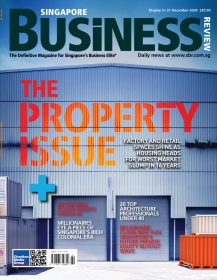
Here's why there might be fewer hotel rooms available in the next years
The 4.8% room supply growth isn't enough.
According to OCBC, it notes that after an outstanding 1Q12, with RevPAR and visitor arrivals growing YoY by 14% and 14.7%, respectively, growth in RevPAR and visitor arrivals decelerated through 2Q12 and 3Q12.
Here's more from OCBC:
Our channel check indicates that hotel bookings up to Chinese New Year in 2013 are still weak, with limited visibility beyond that. We note that 2013, an odd-numbered year, will likely see fewer MICE events, as biennial events are generally held in even-numbered years.
Hoteliers have also expressed concern over the upcoming competition that will result from the growth in hotel room supply; new hotels typicallyprovide substantial room rate discounts in the first few months of operation.
With no immediate catalysts in sight, and an uncertain global economic environment, we see a muted outlook for tourism in 1H13.
For 2012-2014, we forecast that hotel demand will grow at 6.4% p.a., outstripping the projected 4.8% p.a. increase in room supply. Supporting the positive longer-term outlook, the top four places of origin for Singapore’s visitor arrivals are projected to have real GDP growth rates of at least 4.8% in 2013 (Indonesia +6.3%, China +8.1%, Malaysia +4.8% and India +6.6% for FY ending Mar 2014).
Breaking down the projected growth in hotel room supply for 2012-2014, we note that the lower the tier, the higher the expected supply growth: Luxury (+1.6% p.a.), Upscale (+3.4% p.a.), Mid-tier (+7.0% p.a.) and Economy (+7.2% p.a.).
For the first 10 months of 2012, higher hotel tiers showed stronger YoY growth in Average Room Rate (ARR) and RevPAR than lower tiers. We think that this is attributable to the more favourable supply and demand dynamics for the Luxury and Upscale tiers.
The number of affluent visitors to Singapore is increasing with the general growth in arrivals, and supply is more stable for the higher-end hotel tiers.
























 Advertise
Advertise






